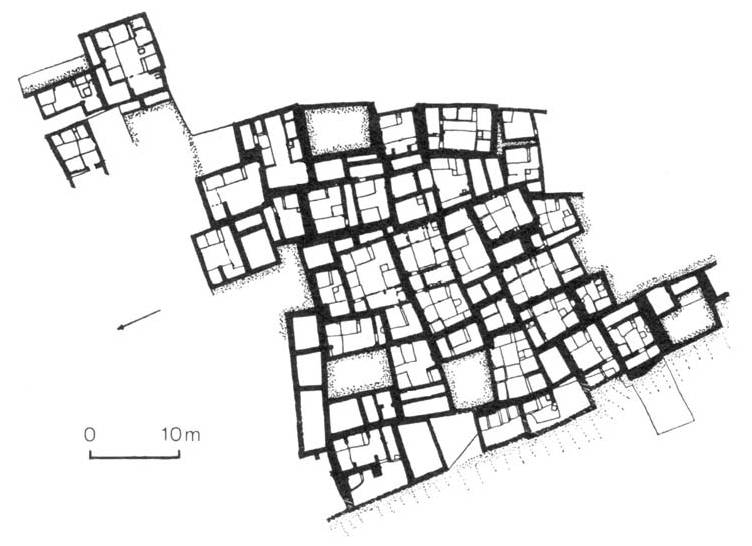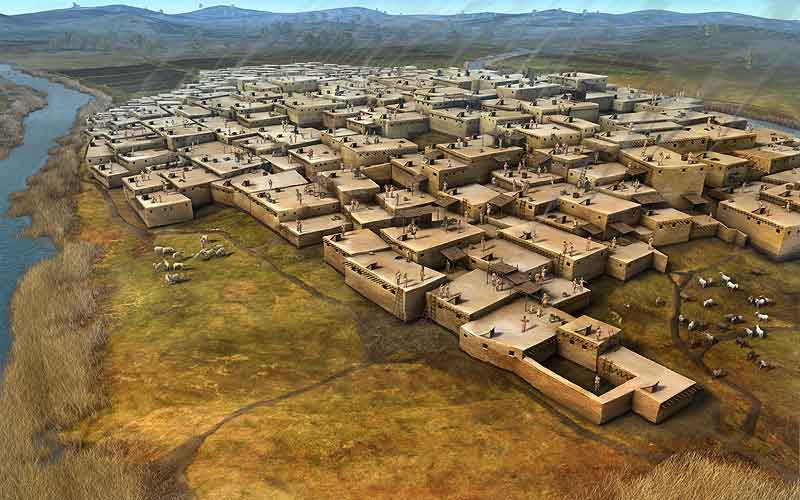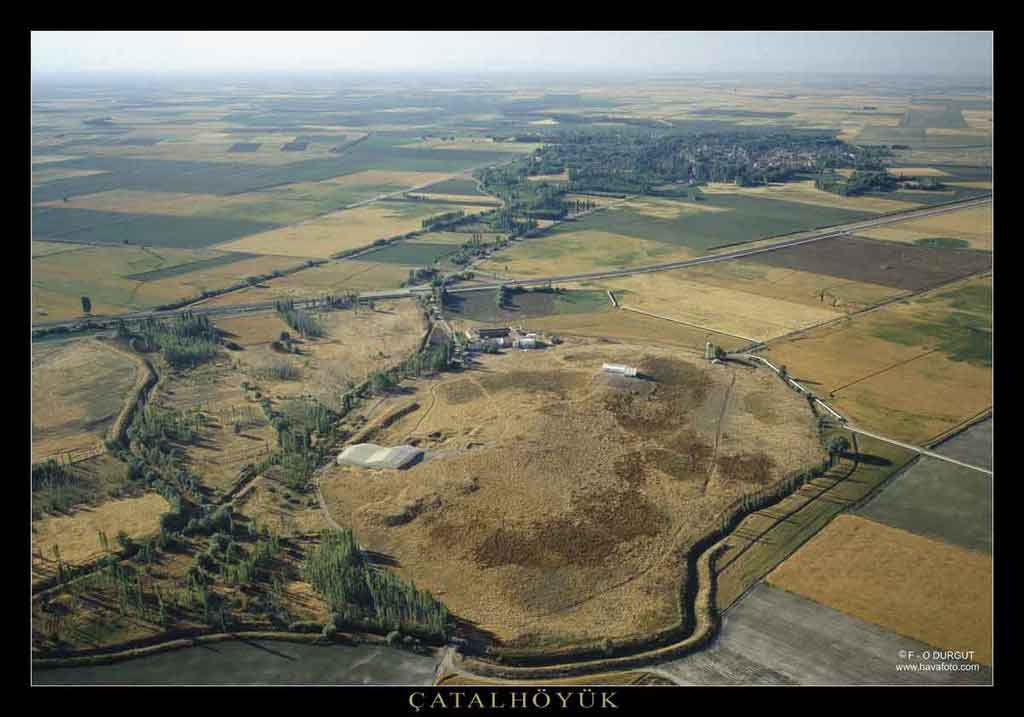
Plan of James Mellaart's
excavations showing the
dense house layout.
source: http://www.semp.us/public
ations/biot_reader.php?Bi
otID=595 [accessed:
September 24 2010]

three dimensional
illustration of
Catalhoyuk
source: http://delalhambra.multip
ly.com/journal/item/10/Th
e_cradle_of_civilization_
Wiege_der_Zivilisation
[accessed : September 24
2010]

Catalhoyuk panoramio,
picture by Orhan Durgut
source: http://www.panoramio.com/
photo/5041164 [accessed :
September 24 2010]
|
Çatalhöyük, a Neolithic and Charcolithic urban settlement which existed from 7500 BC to 5700 BC, was discovered by the British archaeologist James Mellaart in 1958. Since then, part of it has been excavated, but it is deemed to be the largest and most important Neolithic settlement in Anatolia, with a population of the eastern part of the city estimated up to 10.000 people.
Being built on a mound of alluvial clay and on the bank of a now dry river, it housed mostly farmers. The inhabitants of this agricultural settlement lived in mud-brick houses, which were stacked next to each other so closely as if they had been welded. Therefore, there was no street - pattern on the ground level between the dwellings, but the access to the interiors was provided by holes in the ceilings, which were reached through exterior ladders and stairs. The ground circulation was replaced by the rooftops where most of the daily activities took place when the weather allowed. It also appears that in later periods they had even built communal ovens on the rooftops. According to findings, the life cycle of a house coincided with the life of an extended family. The renewal of the houses was succeeded by partial demolition and rebuilding on the basis of the debris. This resulted in the approximately sixty feet high mound which consists of almost eighteen levels of settlement. These were the reasons that drove Mellaart to state the the vision of the builders of Çatalhöyük was far removed from the disorderly and random agglomeration of freestanding huts and hovels characteristic of the Protoneolithic period in Palestine, the only region where settlements of this period have been explored in extenso1 and he continued explaining that Orderliness and planning prevail everywhere; in the size of bricks, the standard plan of houses and shrines, the heights of panels, doorways, hearths and ovens and to a great extent the size of rooms. Hand and foot seem to have been the standards of measurement with four hands to a foot. Houses are invariably of rectangular plan and the lines of the walls are as straight as the eye could make them. Because of the habit of building one structure on top of the other, using the old walls as foundations, a certain homogeneity of plan was created.2
This homogeneity was probably reflected in the everyday life of the inhabitants of Çatalhöyük as they seem to have been quite egalitarian. The lack of public buildings and monumental constructions as well as the fact that this honeycomb complex consisted of relatively equally sized domestic buildings shows lack of hierarchy and no real social distinction. With its residents being mostly occupied with agriculture, there is evidence of no real division of labor within the settlement. The different social and economic relationships in Çatalhöyük were the reason for archaeologists arguing on Mellaart's reference of it as a 'Neolithic city'. According to Guillermo Algaze of the University of California, San Diego, Çatalhöyük may be the largest Neolithic settlement in the Near East, but it's still just an overgrown village.3 An archaeologist, Mark Patton of the University of Greenwich in London, asserts that 'A key defining feature of a town or city is that farmers don't live in them'.4
However with only small part of the settlement being excavated, many archaeologists expect there could be evidence hidden in other parts of the mound which could debunk the so far reached conclusions about the life patterns of the inhabitants.
1. Biot Report # 595 (February 22, 2009), Catalhoyuk : Discovery of Massive 9000-Year Old Neolithic Settlement in Anatolia, SEMP : Suburban Emergency Management Project [online], available from : http://www.semp.us/publications/biot_reader.php?BiotID=595 [accessed : 24th September 2010]
2. Ibid.
3. Balter Michael (1998), THE FIRST CITIES : Why Settle Down? The Mystery of Communities, Science Magazine [online], Vol. 282. no. 5393, p. 1442, DOI: 10.1126/science.282.5393.1442 , available from : http://www.sciencemag.org/cgi/content/full/282/5393/1442 [accessed : 22nd September 2010]
4. Ibid.
source: 1. Wikipedia , vocabulary entry : Catalhoyuk [accessed : 22nd September 2010]
2. Balter Michael (1998), THE FIRST CITIES : Why Settle Down? The Mystery of Communities, Science Magazine [online], Vol. 282. no. 5393, p. 1442, DOI: 10.1126/science.282.5393.1442 , available from : http://www.sciencemag.org/cgi/content/full/282/5393/1442 [accessed : 22nd September 2010]
3. http://www.catalhoyuk.com/history.html [accessed : 22nd September 2010]
4. Biot Report # 595 (February 22, 2009), Catalhoyuk : Discovery of Massive 9000-Year Old Neolithic Settlement in Anatolia, SEMP : Suburban Emergency Management Project [online], available from : http://www.semp.us/publications/biot_reader.php?BiotID=595 [accessed : 24th September 2010]
5. http://travelblogs.discoverturkey.tv/ [accessed : 22nd September 2010] |

